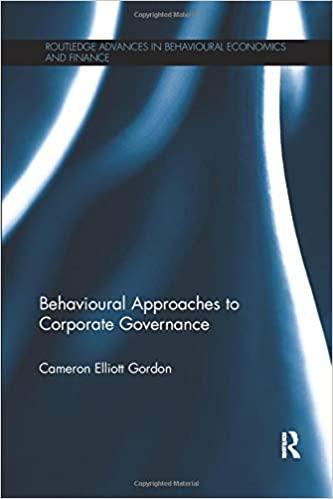Question
Sakura PLC is a leading investment company in Australia and you the below details relating to the capital structure of the company. Information concerning raising
Sakura PLC is a leading investment company in Australia and you the below details relating to the capital structure of the company. Information concerning raising new capital Bonds $1,000 Face value 13% Coupon Rate (Annual Payments) 20 Term (Years) $25 Discount offered (required) to sell new bonds $10 Flotation Cost per bond Preference Shares 11% Required rate to sell new preference shares $100 Face Value $3 Flotation cost per share Ordinary Shares $83.33 Current Market Price $4.00 Discount on share price to sell new shares $5.40 Flotation Cost per bond $5.00 2019 - Proposed Dividend Dividend History $4.63 2019 $4.29 2018 $3.97 2017 $3.68 2016 $3.40 2015 Current Capital Structure Extract from Balance Sheet $1,000,000 Long-Term Debt $800,000 Preference Shares $2,000,000 Ordinary Shares Current Market Values $2,000,000 Long-Term Debt $750,000 Preference Shares $4,000,000 Ordinary Shares Tax Rate 33% Risk Free Rate 5% 3 a) Calculate the cost associated with each new source of finance. The firm has no retained earnings available. b) Calculate the WACC given the existing weights The financial controller does not believe the existing capital structure weights are appropriate to minimise the firms cost of capital in the medium term and believes they should be as follows Long-term debt 40% Preference Shares 15% Ordinary Shares 45% c) What impact do these new weights have on the WACC? The firm is considering the following investment opportunity. (2020-2027) Data is as follows Initial Outlay $1,600,000 Upgrade $700,000 End of Year 4 Upgrade - 350,000 Increased sales units per annum - (Year 5-8) Working Capital $45,000 Increase required Estimated Life 8 Years Salvage Value $60,000 Depreciation Rate 0.125 For tax purposes The machine is fully depreciated by the end of its useful life Other Cash Expenses $60,000.00 Per annum (Years 1-4) Other Cash Expenses $76,000.00 Per annum (Years 5-8) Production Costs $0.15 Per Unit Sales price $0.75 Per Unit (Years 1-4) Sales price $1.02 Per Unit (Years 5-8) Prior sales estimates Year Sales 2010 520000 2011 530000 2012 540000 2013 560000 2014 565000 2015 590000 2016 600000 2017 610000 2018 615559 2019 659000 2020 680000 4 d) Calculate the Net Present Value, Internal Rate of Return and Payback Period The financial controller is considering the use of the Capital Asset Pricing Model as a surrogate discount factor. The risk-free rate is 5 per cent. Year Stock Market Share Index Price 2010 2000 $15.00 2011 2400 $25.00 2012 2900 $33.00 2013 3500 $40.00 2014 4200 $45.00 2015 5000 $55.00 2016 5900 $62.00 2017 6000 $68.00 2018 6100 $74.00 2019 6200 $80.00 2020 6300 $83.33 e) Calculate the CAPM f) Explain why this figure may differ from that calculated above (i.e. Cost of equity Ordinary Shares) 5 Question 3 (5 marks) Previous Years Sales 1400 Retained Earnings 170 Costs 900 Dividends 180 Tax rate 0.3 Assets Liabilities/Equity Current Assets Current Liabilities Cash 460 Creditors 600 Debtors 540 Short Term Notes 100 Inventory 600 Non-Current Assets Non-Current Liabilities PP&E 2000 Debentures 900 Total Assets 3600 Owners Equity Retained Profits 1000 Ordinary Shares 1000 3600 Percentage of Sales Approach Assume all spontaneous variables move as a percentage of sales. a) Given an expected increase in sales of 12%, what is the amount of external funding required? b) To maintain the current debt/equity ratio how much debt and how much equity is required? c) Assuming the company is only operating at 95% capacity, how much new funding (if any) is required?
Step by Step Solution
There are 3 Steps involved in it
Step: 1

Get Instant Access to Expert-Tailored Solutions
See step-by-step solutions with expert insights and AI powered tools for academic success
Step: 2

Step: 3

Ace Your Homework with AI
Get the answers you need in no time with our AI-driven, step-by-step assistance
Get Started


